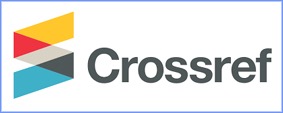Tuturan Perintah Guru dalam Pembelajaran Bahasa Indonesia dengan Metode Ceramah Plus Tanya Jawab dan Tugas (CPTT) di SD Negeri 01 Maguan
DOI:
https://doi.org/10.29240/estetik.v5i1.4121Keywords:
Metode ceramah plus, Tuturan perintah guruAbstract
The teacher's orders are verbal tactics used to condition the learning process and encourage students to do something. This study aims to determine the types and functions of teacher orders in class IV in Indonesian language subjects at SD Negeri 01 Maguan, Malang Regency and describe the application, advantages, and disadvantages of the lecture method plus questions and answers and assignments (CPTT) used by teachers. The study used a qualitative descriptive design with an ethnographic communication approach. The source of the research data is the speech of the fourth-grade Indonesian teacher at SDN 01 Maguan, Malang Regency. Data were collected by using observation, recording, and recording techniques. The data analysis technique was carried out by recording all the speeches of teachers and students in class IV SDN 01 Maguan, analyzing, and classifying the speech data of teacher orders related to the lecture method plus questions and answers and assignments. The results showed that there were 4 types of command utterances in the form of imperative sentences of orders, requests, appeals, and invitations. The CPTT method is used to provide some knowledge to students so that the learning process can take place effectively and efficiently. The use of the CPTT method shows its advantages, namely that teachers can directly measure the level of understanding of students through the question-and-answer process and assignments. And there is a weakness that students become passive because learning is centered on the teacher's lecture
Downloads
References
Abdul, M. (2013). Perencanaan Pembelajaran (Mengembangkan Standar Kopetensi Guru). Bandung: PT. Remaja Rosdakarya.
Andriani, R. F. (2013). Analisis Penggunaan Kalimat Perintah Guru dalam Proses Kegiatan Belajar-Mengajar di SD Negeri 09 Panggang, Kabupaten Jepara (Doctoral dissertation, Universitas Muhammadiyah Surakarta). http://eprints.ums.ac.id/24598/10/02.
Andriyanto. (2013). Bentuk Tuturan Imperatif Bahasa Indonesia dalam Interaksi Guru-Siswa di SMP Negeri 1 Sumenep. Jurnal Pendidikan Humaniora, 1(1), 9-15. http://training.um.ac.id/ojs/index.php/jph/article/view/3792.
Cohen, L., & Manion. (2007). Research Methods In Education. USA and Canada: Routledge Taylor & Francis E-Library.
Daniel, C. K. (2003). Manajemen Kelas. Manado: Balai Diklat Keagamaan.
Darwis, A. (2018). Tindak Tutur Direktif Guru di Lingkungan SMP Negeri 19 Palu: Kajian Pragmatik. Jurnal Bahasa Dan Sastra, 4(2), 21-30. http://jurnal.untad.ac.id/jurnal/index.php/BDS/article/view/12236.
Djamarah, S. B., & Zain. A. (2010). Strategi Belajar Mengajar. Jakarta: Rineka Cipta.
Gulo, W. (2005). Strategi Belajar Mengajar. Jakarta: Grasindo.
Halliday, M. A. K. (1976). Explorations in the Functions of Language. England: Hodder.
Istiana., Patrianto., & Sanulita, H. (2018). Analisis Tuturan Imperatif Guru Dan Siswa. Jurnal Pendidikan dan Pembelajaran Khatulistiwa, 7(4): http://dx.doi.org/10.26418/jppk.v7i4.24769.
Keraf, G. (2004). Komposisi: Sebuah Pengantar Kemahiran Bahasa. Flores: Nusa Indah.
Montolalu., Suandi., & Sutama. (2013). Kesantunan Verbal dan Nonverbal pada Tuturan Imperatif dalam Pembelajaran Bahasa Indonesia di SMP. e-Journal Program Pascasarjana Universitas Pendidikan Ganesha. 2(1). https://ejournal-pasca.undiksha.ac.id/index.php/jurnal_bahasa/article/view/720/505.
Mulyasa. (2005). Menjadi Guru Profesional (Menciptakan Pembelajaran Efektif dan Menyenangkan). Bandung: Remaja Rosda Karya.
Muti’ah, A. (2019). Tindak Tutur Direktif Guru Di Kelas Awal Sekolah Dasar : Upaya Untuk Mengelola Perhatian. Seminar Internasional Riska Bahasa XIII, 233–244. http://proceedings.upi.edu/index.php/riksabahasa/article/view/877/790.
Narwanti, S. (2011). Pendidikan Karakter. Yogyakarta: Familia.
Nasution, M. K. (2017). Penggunaan metode pembelajaran dalam peningkatan hasil belajar siswa. STUDIA DIDAKTIKA: Jurnal Ilmiah Bidang Pendidikan, 11(1), 9–16.http://www.jurnal.uinbanten.ac.id/index.php/studiadidaktika/article/view/515/443.
Prihatini, A., Rahma, C. P. W., & Sunaryo, H. (2022). Implementasi Model Pembelajaran Kooperatif Kritis untuk Meningkatkan Kualitas Produk Pemikiran Tulis pada Matakuliah Puisi. Jurnal Panrita Abdi, 6(2), 356–368. https://doi.org/10.20956/pa.v6i2.14407.
Prihatini, A., Sugiarti., Ambarsari, T. A. B., & Nisa, I. N. (2022). Kompetensi Pedagogik Guru SMA dalam Menerapkan Pembelajaran Multiliterasi sebagai Wujud Merdeka Belajar. Edukatif : Jurnal Ilmu Pendidikan, 4(5), 6823–6831. https://doi.org/10.31004/edukatif.v4i5.3020
Qomariah, S. S., & Sudiarditha, I. K. R. (2016). Kualitas Media Pembelajaran, Minat Belajar, dan Hasil Belajar Siswa. Pendidikan Ekonomi Dan Bisnis, 4(1), 33–47. https://doi.org/10.21009/JPEB.004.1.3
Rahardi, K. (2005). Pragmatik: Kesantunan Imperatif Bahasa Imperatif Bahasa Indonesia. Jakarta: Erlangga.
Rahardi, K. (2009). Sosiopragmatik. Jakarta: Erlangga.
Raka, J. (2003). Pengelolaan Pembelajaran. Jakarta: P3G.
Saputra, I. W. G. M., Martha, I. N., & Rasna, I. W. (2014). Kesantunan Imperatif Tuturan Guru Untuk Memotivasi Siswa dalam Pembelajaran Bahasa Indonesia di Kelas VII SMP Negeri 1 Singaraja. Jurnal Pendidikan Bahasa dan Sastra Indonesia Undiksha, 2(1). http://dx.doi.org/10.23887/jjpbs.v2i1.3396.
Sugiarti, S., Prihatini, A., & Pangesti, F. (2018). Penggunaan Video Berbasis Teks dan Keranjang Bahasa untuk Meningkatkan Kemampuan Siswa dalam Menganalisis Aspek Kebahasaan Laporan Hasil Observasi. JINoP (Jurnal Inovasi Pemebelajaran), 4(2), 172-186. http://eprints.umm.ac.id/id/eprint/44561.
Surya, M. (2013). Psikologi Guru Konsep dan Aplikasi. Bandung: Alfabeda.
Suryabrata, S. (2006). Metodologi Penelitian. Jakarta: PT. Raja Grafindo Persada.
Wijana, I. P. (1996). Dasar-Dasar Pragmatik. Yogyakarta: Andi Offset.
Zaini, H., Munthe, B., & Aryani. S. A.(2008). Strategi Pembelajaran Aktif. Yogyakarta: Pustaka Insani Madani.
Downloads
Published
How to Cite
Issue
Section
Citation Check
License
Copyright (c) 2022 Widi Sukmawati Trisnatul Rohma, Arti Prihatini

This work is licensed under a Creative Commons Attribution-NonCommercial-ShareAlike 4.0 International License.
Authors who publish with ESTETIK : Jurnal Bahasa Indonesia agree to the following terms:
- Authors retain copyright and grant the journal right of first publication with the work simultaneously licensed under a Creative Commons Attribution-NonCommercial-ShareAlike 4.0 International License (CC BY-NC-SA 4.0) that allows others to share the work with an acknowledgment of the work's authorship and initial publication in this journal.
- Authors are able to enter into separate, additional contractual arrangements for the non-exclusive distribution of the journal's published version of the work (e.g., post it to an institutional repository or publish it in a book), with an acknowledgment of its initial publication in this journal.
- Authors are permitted and encouraged to post their work online (e.g., in institutional repositories or on their website) prior to and during the submission process, as it can lead to productive exchanges, as well as earlier and greater citation of published work (See The Effect of Open Access).







